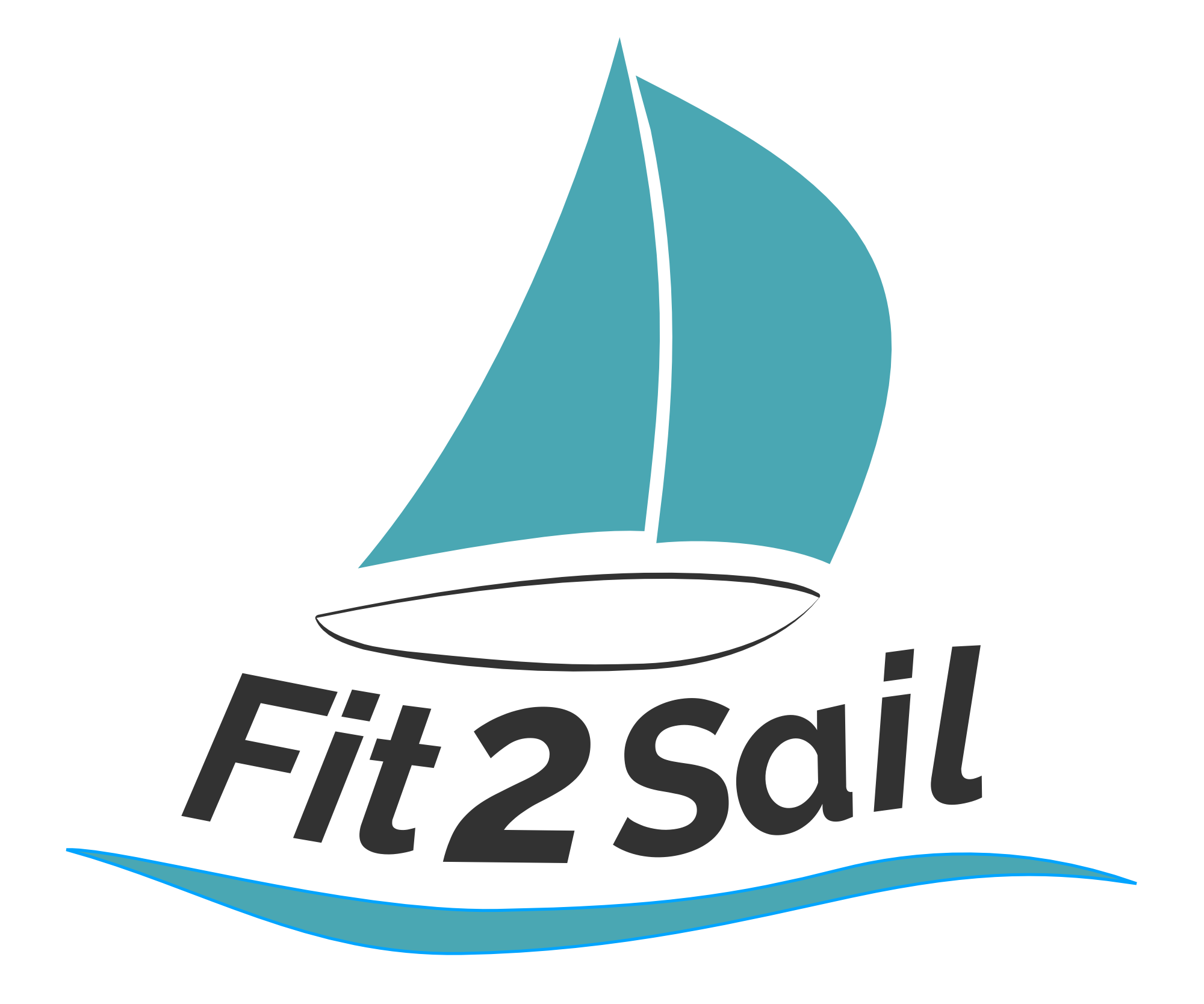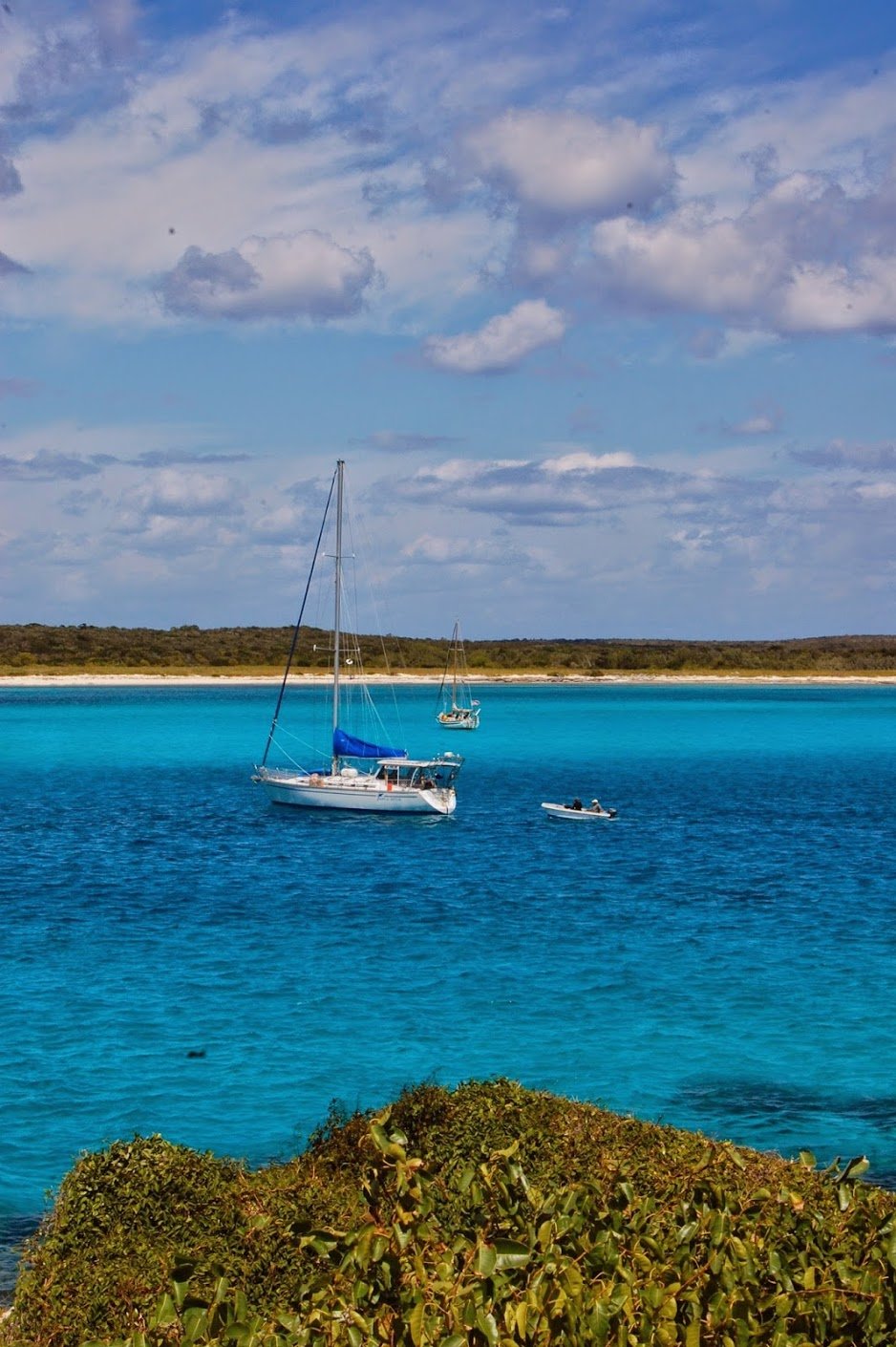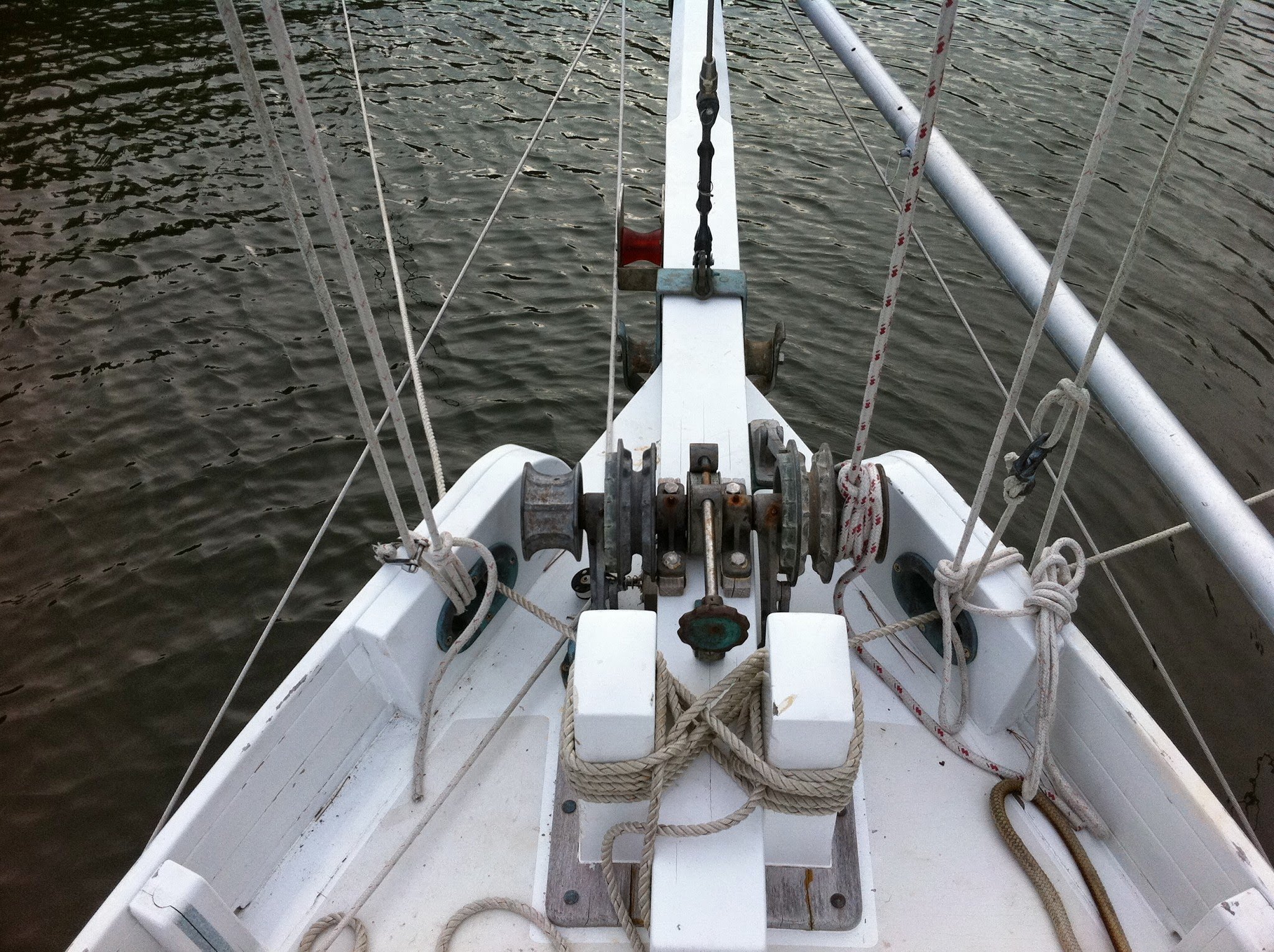Anchoring Basics - a Dictionary of Sorts
If you want to start a heated debate among a group of cruisers, bring up anchoring. That is NOT the point of this post. Instead, I offer some basic definitions of anchoring terminology. You’ll be better equipped to both understand and participate in that great debate when it comes up on the beach somewhere!
At anchor
Anchor: Whatever piece of gear you use to hook your boat to the bottom. Brand names you might hear include CQR, Danforth, Bruce, Spade, Rocna, Mantus, Fortress. There is no one anchor that is best in all situations.
Marking Rode: Knowing how much rode you’ve got out is critical. There are counters you can buy that do this automatically; for many boaters, marking at 25 or 50 foot increments is a simpler solution. Of course, HOW to mark it is a complicated balance between longevity, visibility, environmental awareness, and practicality.
Rode: The material used to connect the anchor and the boat. Most boats will either use all chain, or some combination of line and chain. Your cruising grounds, your boat’s carrying capacity, your windlass choice - all of these will influence what you use aboard.
Scope: The ratio of rode to water depth. Modern anchors work by hooking into the seabed; the angle of pull is affected by how much rode you have out. The flatter the angle, the harder to pull the anchor out. You need less scope with all chain because chain won’t float, keeping that angle low. Important to note that you need to take the height of your bow (or where your anchor originates on the boat) into account. Say you’re anchoring in 20 feet of water and your bow is 10 feet off the surface. If you forget to take that extra 10 feet into account, you won’t have as much rode out as you think you do and your anchor might not hold well. I usually note the amount of rode out as I see the marker in the water.
Snubber: A length of line, usually nylon, that connects the chain to the bow. One major drawback to using all-chain as your rode is that chain does not stretch. As the boat moves and surges with wind and wave, you do want some elasticity to keep shock loading on the boat at a minimum. A snubber serves this purpose.
Windlass: a winch designed to pull up the anchor. Either manual or electric, a windlass is arguably an important piece of safety gear and an essential component of your anchoring system. A windlass allows you to deploy AND RETRIEVE larger anchors with more chain than you could otherwise.
Calypso’s old manual windlass. We’ve since replaced it with an electric one.
Learning to anchor well is one cruising skill that will pay off handsomely. You’ll feel more secure on the hook and be able to stay out of pricey marinas. Getting the terminology correct is a good first step!


